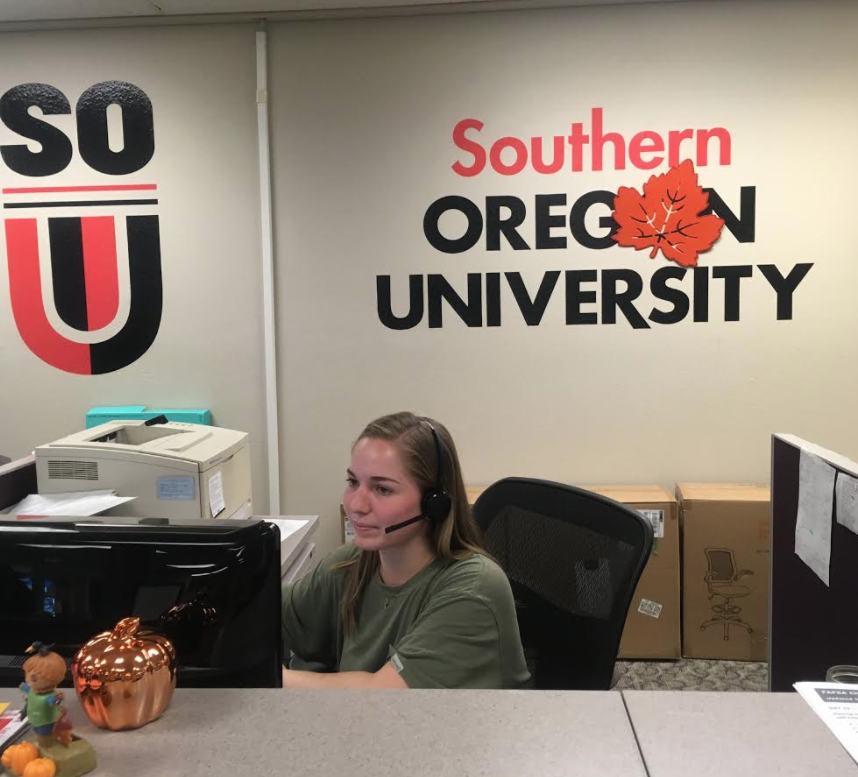
A verification process mandated by the U.S. Department of Education is keeping approximately one-third of students from receiving financial aid. “It has been incredibly frustrating,” said Mackenzie Civil, a Southern Oregon University student who just completed the process. “I think that this whole thing is a waste of time.”
The verification process ensures that students are not misleading the federal government or their academic institutions to receive more aid than they qualify for. According to Edvisors, a site dedicated to helping students deal with the challenges of college, The Department of Education selects FAFSAs that need information verified and sends a list of students to their schools. The Department of Education selects approximately one in three FAFSAs using a risk model that determines who is most likely to have entered incorrect information.
Edvisors reported that “red flags” on a FAFSA include incomplete FAFSAs, unexpected tax values, or a difference in marital status or family size between one’s FAFSA and tax return.
“I don’t remember exactly how figured out that I had been selected,” Civil said. “I was lucky and knew about it at the end of last year.” He continued, “I went home for the summer I looked over the papers with my mom and they didn’t make much sense.”
“We had to call them [Enrollment Services Center] a couple of times for clarification and help. I had to call them again to get help trying to get papers from the IRS,” said Civil. The IRS cannot mail documents if the requester has moved since filing 2015 taxes, and without a credit card, the IRS will not release information digitally.
“If you can’t do either of those then you have to make an appointment to go into the closest IRS office and get the documents that way,” he concluded. It took the student a month and a half to go through this process before technical problems with his fax machine further delaying his progress.
This interfered with his attempts to get aid. This year’s aid was based on 2015 tax information, so FAFSA did not take into account that Civil’s parents separated and his father lost his job. “Because of verification and my other situation it could be week five when I finally receive my disbursements from school,” he said. Civil expected to have his aid available to pay for tuition, food, and rent. Enrollment Services waived the late fee that Civil would have been required to pay because he did not have the money for tuition.
Lindsey Rocha, a SOU student-worker in the Enrollment Services office, had a different experience with verification. “I received an automated email from the Financial Aid Department,” she said. “It gave me instructions on how to log in to my insideSOU and check my student requirements for [Financial Aid] FA. I didn’t look at it right away, but a few months later I realized that I hadn’t seen my Financial Aid package yet.”
Rocha was selected for verification her freshman and sophomore years. She said, “It was easy for me and my mother to get our tax return transcripts because we had them on record already.” She turned in her documents the day after she got back from visiting her family May 1st. Being selected for verification did not affect Rocha’s financial aid situation, and she got her aid on time.
Kristen Gast, SOU’s Director of Financial Aid, said, “Its timeline and the time it takes to get through” are the biggest obstacles in the verification process. After being selected, a student must provide the Financial Aid department with official documents that differ per case. When it comes to timing Gast said, “If you turn your documents in at the last minute (right before fall term) we back up and this will delay the processing time.”
Gast started as Director seven months ago and is proud with how quickly the department goes through the process once they receive all the necessary documents. She worked at several other universities before coming here and said that schools typically take six to eight weeks to process documents while SOU’s Enrollment Services usually takes fewer than two weeks.
She hopes to make changes that reduce the confusion and negative impacts of verification. Her ideas are increasing email frequency to students who need to turn in documents, using text messages, and accepting pictures of documents rather than the documents themselves.
Until those changes can be made, there are ways to make verification easier or prevent it altogether. “It is highly suggested that students utilize the IRS DRT on the FAFSA to eliminate the errors and thus reducing the chances of being selected,” said Gast. Edvisors also suggests “Tell the truth on your FAFSA. People who try to game the system usually get caught.”
“Don’t be a stranger,” Gast urged. She suggested coming into Enrollment Services at least once a year and, ideally, once per term. Then, students are not caught off guard by unexpected problems. She she also suggested students complete their FAFSAs and tax returns as soon as possible.
Students should try complete this paperwork as close to Oct. 1st (FAFSA’s opening day) as possible. If students follow these recommendations, the government is less likely to select the individual for verification, and as Gast puts it, “Getting knocked out of the pool for free money.”



